It goes without saying: The UC Berkeley Library is absolutely flush with information, tucked in vaults, databases, and rows and rows of towering stacks. But the Library is also bursting with emotion, layered into artworks, pulsing through manuscripts and diaries, and overflowing from video and audio recordings from years gone by. We asked five members of the UC Berkeley community about materials in the Library’s collections and the emotions they can evoke. Each story proves that the Library, and the treasures it holds, can not only make us think, but also make us feel.
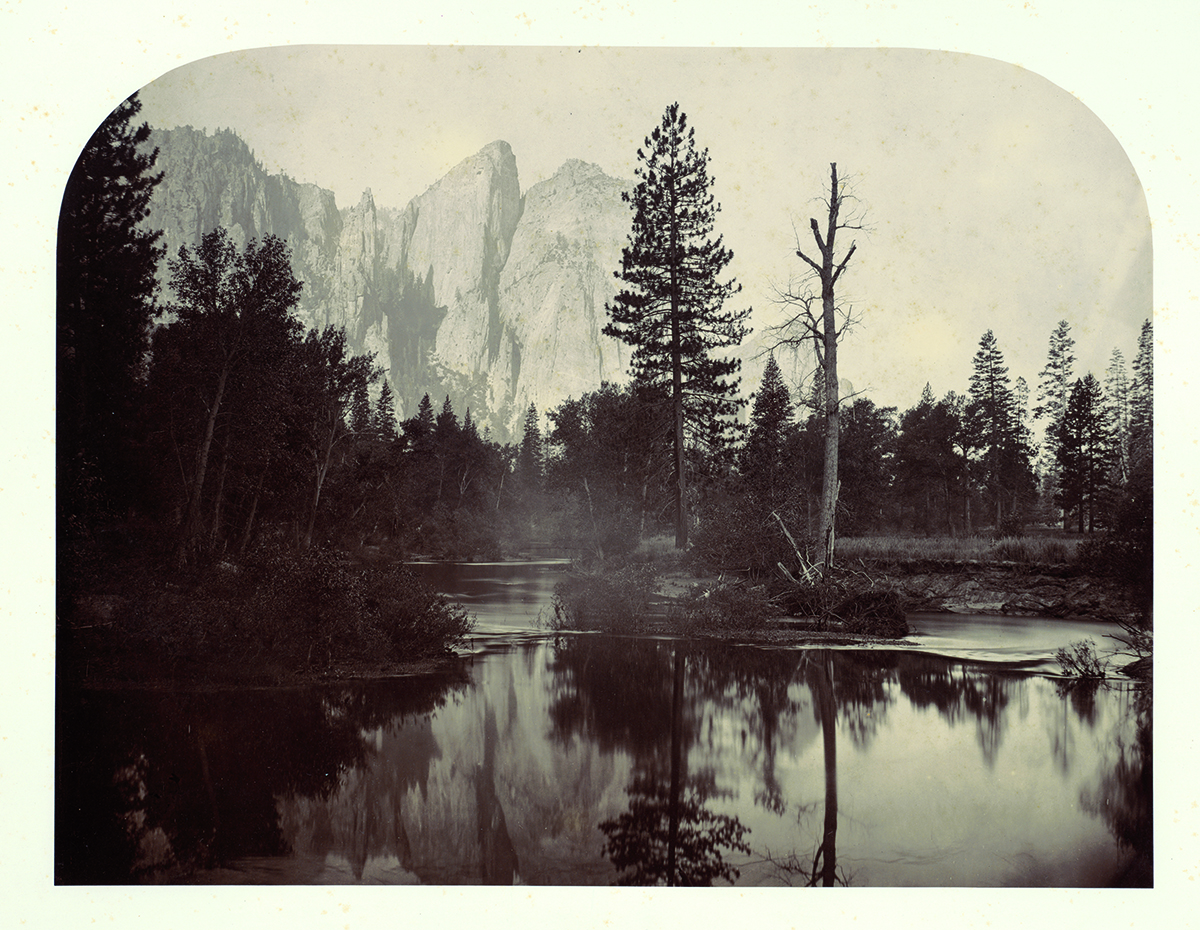
Mammoth plate photographs of Yosemite Valley by Carleton Watkins
Selected by Lee Anne Titangos, instruction and information specialist, The Bancroft Library
The UC Berkeley Library isn’t studded with redwoods, bubbling with streams, or teeming with wildlife, but it is packed with portals into nature. Among the most stirring examples are The Bancroft Library’s mammoth plate photographs (measuring 18 inches by 22 inches) of Yosemite Valley by Carleton Watkins. Watkins first photographed Yosemite in 1861, and the resulting photos offered Americans on the East Coast their first glimpse of the area’s pristine beauty, according to Lee Anne Titangos, instruction and information specialist at Bancroft. The images were passed along to Congress, and they were said to have helped influence President Abraham Lincoln to sign the Yosemite Grant Act in 1864, preserving the area and sowing the seeds for the national park system. The prints are delicate, and their large size makes them hard to handle carefully, so access is restricted. But through digitized versions online, anyone can behold the photographs’ beauty. “When I get the chance to see the originals, I’m just struck with absolute wonder and awe,” says Titangos, citing the “splendor of unspoiled nature, the amount of detail captured, the intricate shadows across the rock faces.”
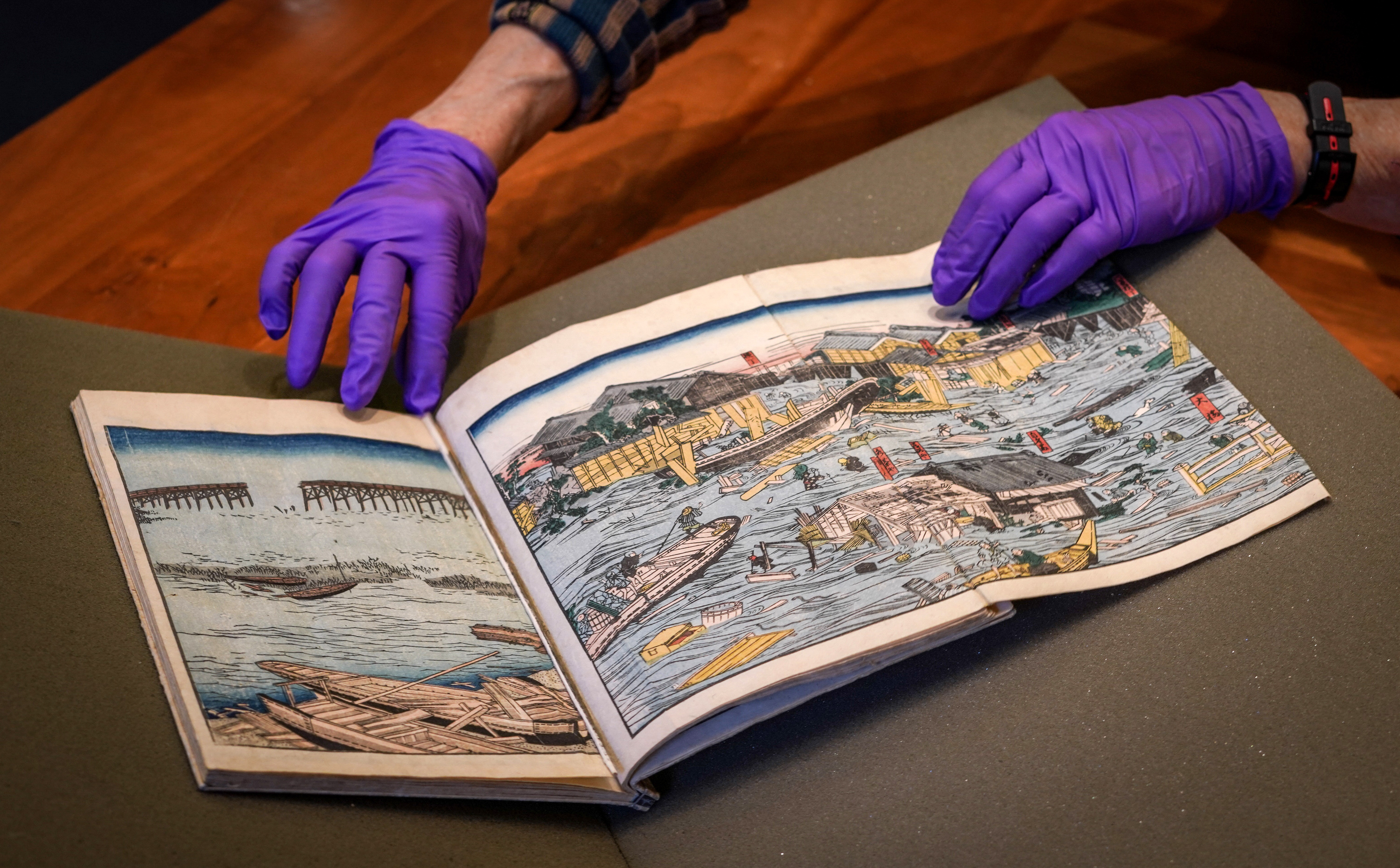
Ansei Fūbunshū (Collection of Ansei-Era Anecdotes) by Kanagaki Robun
Selected by Toshie Marra, librarian for the Japanese collection, C. V. Starr East Asian Library
In the throes of disaster, it’s easy to lose sight of the long march of history. For her pick, Toshie Marra, librarian for the Japanese collection at the C. V. Starr East Asian Library, points to Ansei Fūbunshū by 19th-century author and journalist Kanagaki Robun as a reminder of historical tragedies. By the mid-18th century, the population of Edo (modern Tokyo) had reached a million, and what was once a humble fishing village had become the largest city in the world. But even as it boomed, it was plagued by calamities, including fires and floods, earthquakes and epidemics. Robun’s three-volume, richly illustrated work recounts a devastating typhoon and flood that struck Edo in 1856, claiming 10,000 lives. “Nature sometimes does horrible things to people, without any reason,” Marra notes. “And, in front of nature, human beings seem so helpless.” The work is believed to be one of the very first Japanese books that came to be acquired by a U.S. library, in 1868. Before coming to Berkeley, the East Asian Library’s copy of Ansei Fūbunshū escaped a calamitous fate of its own: The work was previously owned by Dohi Keizō, a professor of medicine at Tokyo Imperial University (and a collector of rare books), who almost lost his entire library in a blaze ensuing from the 1923 Great Kantō earthquake. “When I think about how the materials survived and eventually came to our library from Japan, crossing the Pacific, I appreciate even more that we can use and learn from these precious books,” Marra says.
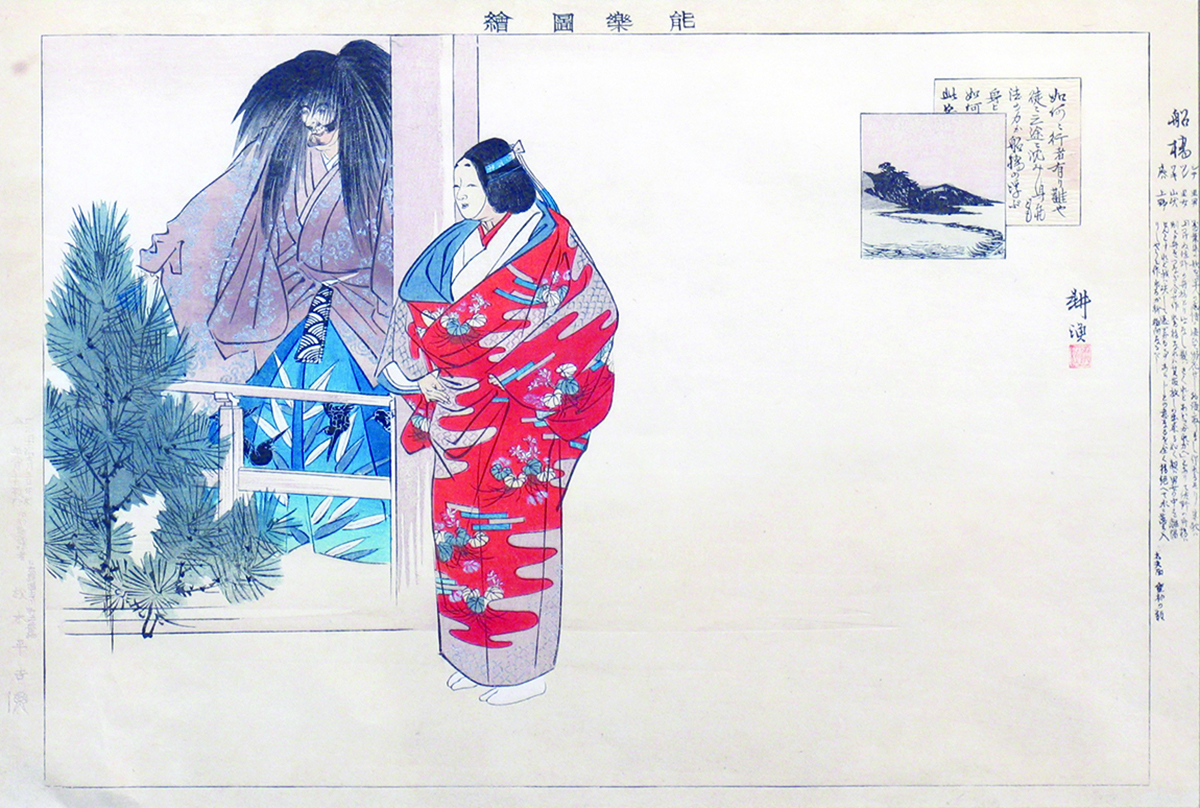
Funabashi: The Floating Bridge by Kōgyo Tsukioka
Selected by Eva Allan, former lecturer, History of Art Department
It was the houseguest that stayed longer than expected. Around October of 2019, Eva Allan, who was working as a lecturer in Berkeley’s History of Art Department, checked out a print from the Library’s Graphic Arts Loan Collection. Then the pandemic came, extending due dates and affording Allan more time with the artwork than she could have imagined. The piece, Funabashi: The Floating Bridge by Kōgyo Tsukioka, depicts a scene from a traditional Noh play. As the story goes, a pair of star-crossed lovers are separated by a river. Their disapproving families remove part of the bridge connecting the two, and the man, trying to cross the bridge to reach his beloved, falls in and drowns. In the print, the woman stands next to a doorway or window, the spirit of her lover standing on the other side. Over time, as the print adorned Allan’s dining room wall, the characters in the piece grew into a reminder of those who lost their loved ones during the pandemic, “separated by glass or screens, wearing masks or otherworldly ventilators and oxygen tubes, barred and blockaded from corporal human touch,” as Allan later wrote in reflection. Instead of meeting each other’s gaze, the lovers are transfixed by a little pine tree, which, Allan says, could represent “remembrance, longevity, and steadfast, undying love” — and, during the COVID-19 crisis, hope. Living with art can draw out new meaning and an emotional resonance you may never have expected, Allan says. “You don’t need a degree in art history to experience such a connection — just the beginnings of a preference and the willingness to spend some time looking,” she says.
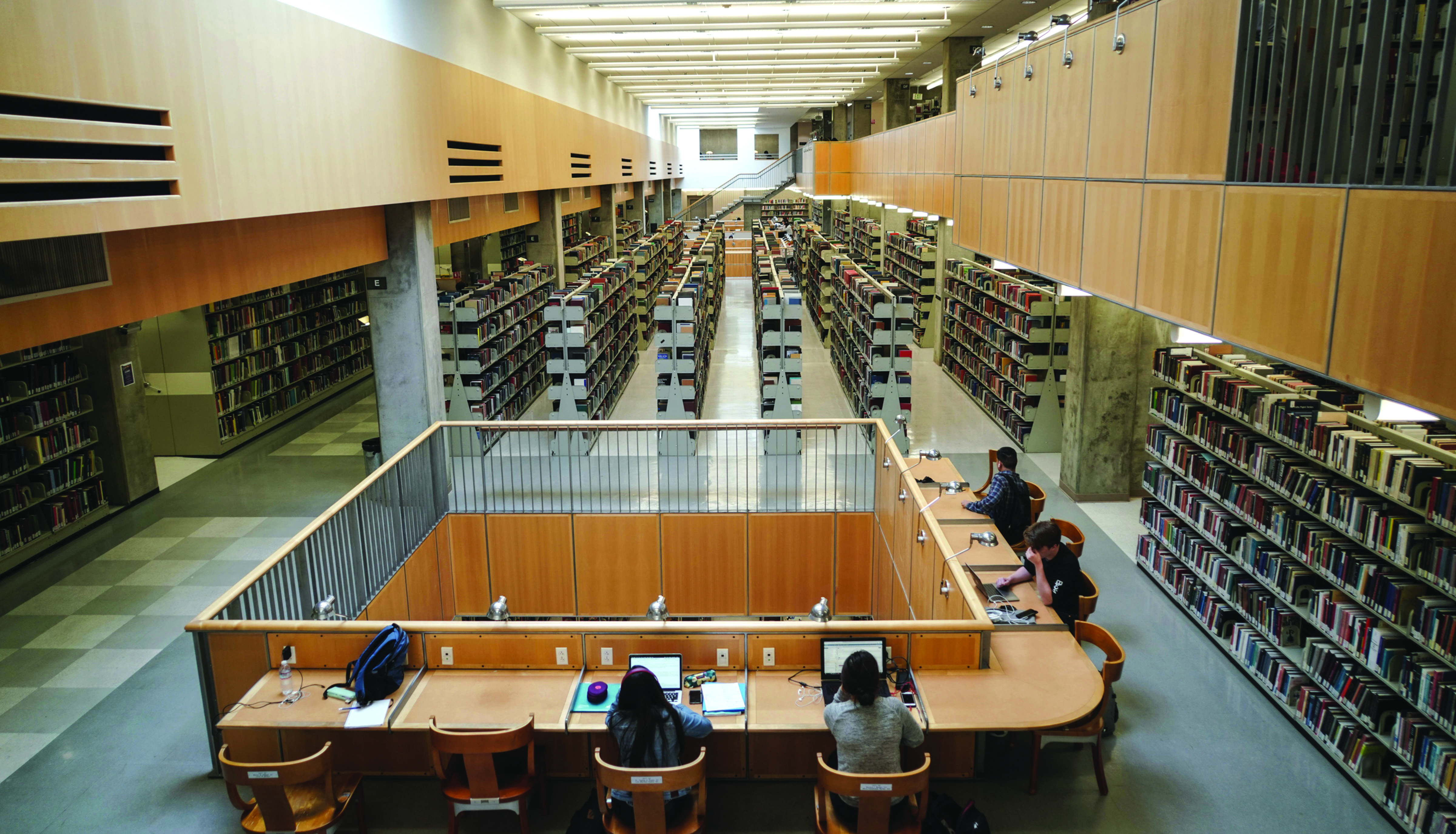
Main (Gardner) Stacks
Selected by Claude Potts, librarian for Romance language collections
You never quite know what you’ll find in the Main (Gardner) Stacks. Descend the spiral stairs into the sprawling underground structure, and you’ll encounter a seemingly endless trove of knowledge — 2.6 million volumes’ worth, in fact. On the shelves, contemporary works sit alongside precious volumes from the 19th and early 20th centuries. “Even though I’ve worked here for nearly 15 years, I’m continually in awe when looking for a specific book, and I become sidetracked by how the old and the new coexist,” says Claude Potts, Berkeley’s librarian for Romance language collections. Treasures include a custom-bound first edition of Tempeste, a collection of poems by the Italian feminist poet Ada Negri, published in 1896, and a first edition of playwright Luigi Pirandello’s Uno, Nessuno e Centomila (One, No One and One Hundred Thousand), from 1926. Potts says you can often spot the older volumes in Main Stacks by their telltale worn leather bindings and by the publication date inscribed as the last part of their call numbers. “Like shimmering stones in a creek bed, you never know if they’re worth picking up until you reach for one and hold it in your hands,” he says.
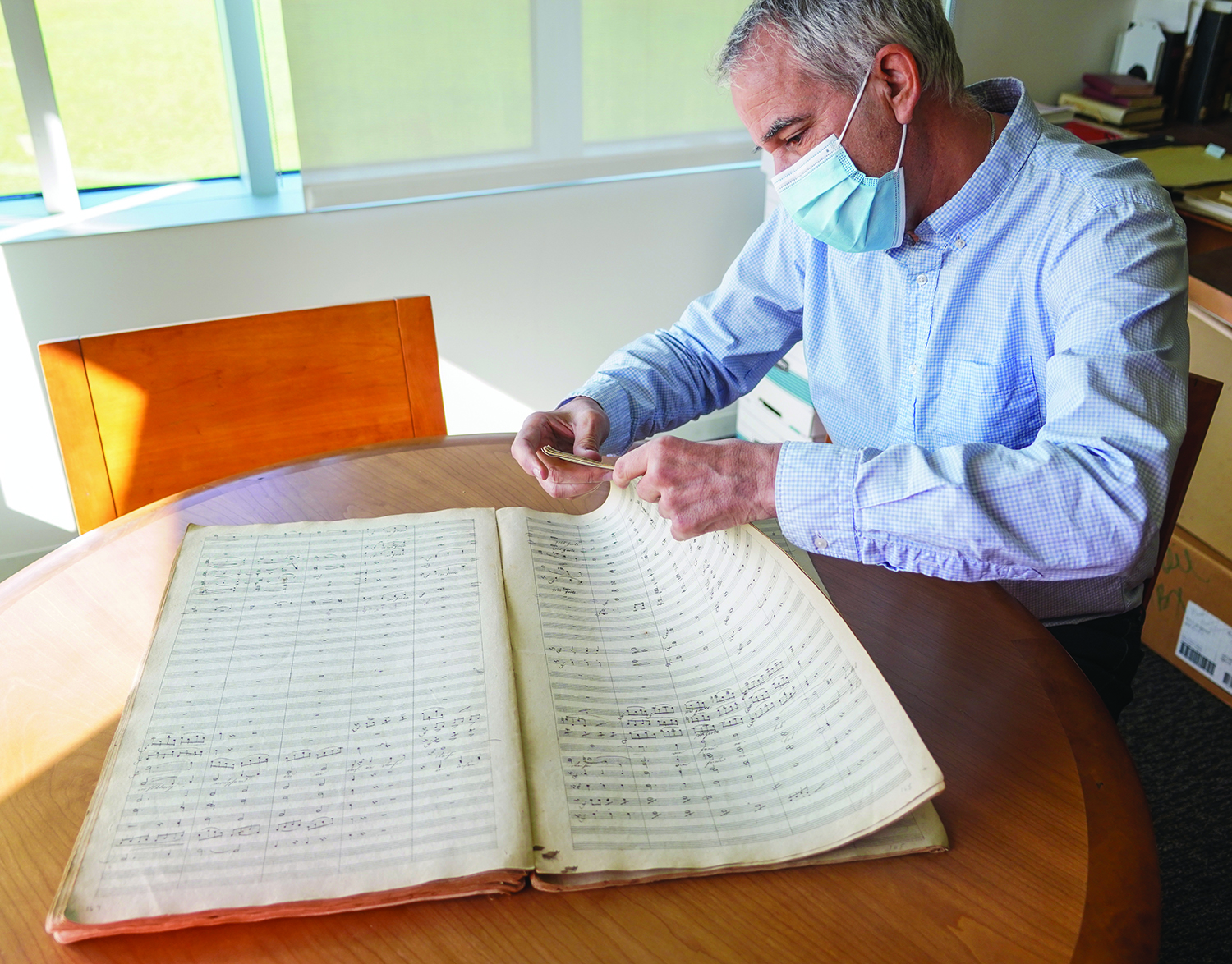
The Power of Imitative Music by N.C. Bochsa
Selected by Manuel Erviti, archivist and music reference librarian, Jean Gray Hargrove Music Library
It’s a story of lost and found. In 2004, a musician from Oakland donated a large 19th-century manuscript score by an unnamed composer to Berkeley’s Jean Gray Hargrove Music Library. Shortly after it was brought in, John Roberts, former head of the Music Library, and Manuel Erviti, archivist and music reference librarian, tracked down the name of the work and the identity of the composer, using clues from the music, along with Library resources and clever Googling. The score was The Power of Imitative Music by the controversial French-born harp virtuoso and composer N.C. Bochsa. The Power of Imitative Music — an eight-movement composition for orchestra, chorus, and speaker, based on an ode by English poet William Collins — was thought to have been lost after performances in London, Vienna, Naples, and Zurich. “In performance,” Erviti says, “a speaker recited selected lines in which the poet described the musical characteristics of what today we might call an emotion, and an instrumental movement followed depicting the impulse in musical tones — Fear, Anger, Despair, Hope, Revenge, and Melancholy, followed by a closing chorus in praise of music.” The piece, composed in 1836, likely hasn’t been performed since the 1840s, Erviti says, and has never been published. But Erviti aims to change that: He has been researching the work’s performance history and reception, and he hopes to prepare a modern edition for publication.
Editor’s note: This article was updated from its original form.